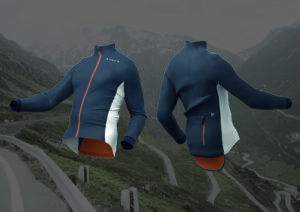
The sportswear industry has been undergoing a significant transformation, driven by growing consumer awareness of environmental sustainability. As a result, sportswear brands are increasingly incorporating eco-friendly materials into their product lines.
In this blog, we will explore some of the most used sustainable fabrics being adopted by activewear brands, highlighting a few of their unique properties and benefits for both consumers and the environment.
Recycled Polyester
Recycled polyester is one of the most widely used sustainable fabrics in sportswear. It is made from post-consumer plastic bottles or discarded polyester garments. The recycling process involves melting down the plastic and then extruding it into new polyester fibres. This material offers several advantages.
Waste Reduction:
Recycling polyester diverts plastic waste from landfills and oceans, contributing to a cleaner environment. Note however that this is only a temporary solution as the new garments using the polyester will continue to pollute the oceans through washing microfibres into the sea which cannot be collected.
Energy Efficiency:
Producing recycled polyester consumes significantly less energy compared to virgin polyester production.
High Performance:
Recycled polyester maintains the same performance qualities as virgin polyester, including moisture-wicking, breathability, and durability.
Organic Cotton
Organic cotton is grown without the use of synthetic pesticides or genetically modified organisms (GMOs). It promotes sustainable agriculture and reduces the environmental impact of conventional cotton farming. Key benefits of organic cotton in sportswear include:
Reduced Chemical Usage:
Organic cotton production reduces exposure to harmful pesticides, benefiting both farmers and ecosystems.
Soil Health: Organic farming practices promote healthier soils, enhancing long-term sustainability.
Comfort and Breathability: Organic cotton sportswear offers comfort, breathability, and moisture absorption for athletes.
Note that the use of large volumes of water is still needed to grow Organic cotton and so this would need to be factored into the eco calculator when selecting the most sustainable fibre.
Tencel (Lyocell)
Tencel, a brand of lyocell, is a sustainable fabric derived from wood pulp, primarily sourced from eucalyptus, beech, and spruce trees. The production process involves using a closed-loop system, minimising water and chemical waste. Tencel offers several advantages for sportswear:
Eco-friendly Production:
Tencel is produced in an environmentally responsible manner, with reduced water consumption and minimal chemical usage.
Breathability:
Tencel is highly breathable and moisture-wicking, making it ideal for sportswear that needs to keep athletes cool and dry.
Biodegradability:
Tencel is biodegradable, ensuring that it can safely return to the environment at the end of its lifecycle. When it does degrade, it releases the natural nutrients and fibres back into the soil.
Hemp
Hemp is a highly sustainable and versatile fabric option for sportswear. It is made from the fibres of the hemp plant, which requires minimal water, pesticides, and synthetic fertilisers. Hemp sportswear offers the following benefits:
Sustainable Cultivation:
Hemp is a low-impact crop that grows quickly, reducing pressure on water resources and farmland.
Durability: Hemp fabric is known for its strength and longevity, making it suitable for rugged sportswear.
UV Protection: Hemp fabric naturally provides UV protection, which is beneficial for outdoor activities.
Bamboo
Bamboo fabric is derived from bamboo pulp, which is renewable and sustainable. Bamboo sportswear is gaining popularity due to the following characteristics:
Rapid Growth:
Bamboo is one of the fastest-growing plants, reducing the environmental impact of its cultivation.
Moisture-wicking:
Bamboo fabric has excellent moisture-wicking properties, keeping athletes dry during workouts.
Breathability:
Bamboo is highly breathable, making it comfortable for active wear.
Recycled Nylon
Similar to recycled polyester, recycled nylon is produced by transforming post-consumer nylon waste, such as fishing nets or discarded garments, into new nylon fibres. This material is being used in sportswear for the following reasons:
Plastic Waste Reduction:
Recycling nylon diverts plastic waste from oceans and landfills.
High Performance: Recycled nylon retains the durability and elasticity of virgin nylon, making it suitable for sportswear.
Note that Recycled Nylon is similar in it continues to pollute the oceans when the garment is washed.
Sorona
Sorona is a bio-based fabric made from corn-derived polymers. It is known for its unique combination of stretch, softness, and durability, making it suitable for various sportswear applications. Key benefits of Sorona include:
Reduced Carbon Footprint:
The production of Sorona requires less energy and emits fewer greenhouse gases compared to traditional synthetic fabrics.
Comfort and Performance:
Sorona offers exceptional stretch and recovery properties, enhancing the comfort and flexibility of sportswear.
Piñatex
Piñatex is a sustainable alternative to leather or synthetic materials for sportswear. It is made from the fibres of pineapple leaves, a by-product of the pineapple industry. Piñatex offers several advantages:
Waste Utilisation:
Piñatex repurposes agricultural waste, reducing the environmental impact of pineapple farming.
Versatility:
Piñatex is a durable and versatile material that can be used for various sportswear applications, from shoes to accessories such as gloves.
Conclusion
As the demand for sustainable sportswear continues to grow, the industry is constantly evolving with new, eco-friendly, sustainable fabric options. The fabrics mentioned above are just a few examples of the latest sustainable materials being used to create sportswear that is not only high-performance but also more environmentally responsible.
By incorporating these materials into product lines, sportswear brands can make a positive contribution to the planet and cater to the growing segment of consumers who value sustainability in their activewear choices.
In the future, we can expect even more innovative and sustainable fabric options to emerge as the industry seeks to minimize its environmental footprint and eventually become carbon neutral.
If you are looking for sustainable performance materials and want more information, please find our guides below.
Looking to brush up on sustainable fabrics and see the benefits each one has to offer? This guide is for you.
Looking to source sustainable fabrics from a suitable fabric mill? Download this guide.
If you want to learn more about how to create sustainable activewear, then please get in touch. We are huge advocates.




